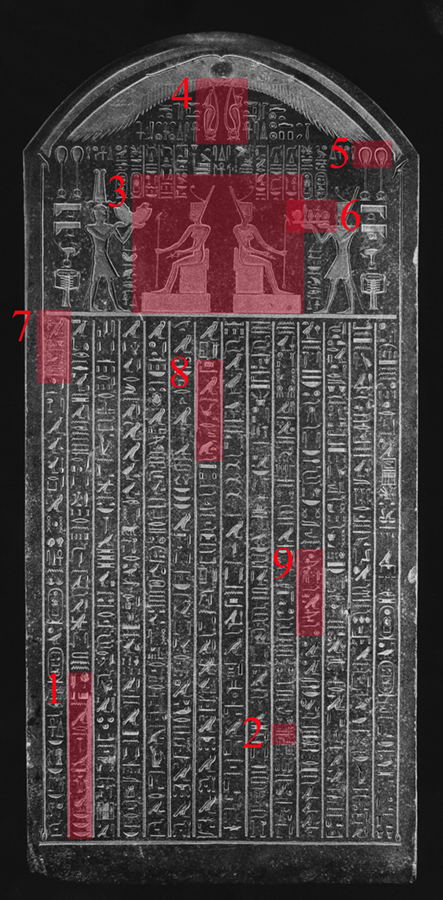RTI imaging from a silicon impression
A white silicon mould impression of the Stele of Thonis-Heracleion was photographed using RTI photography (Reflectance transformation imaging).
The method was employed to enhance and to reveal surface information that is not disclosed under direct empirical examination of the physical object.
Nine key areas on the stele were chosen to target the RTI which could yield further information, such as tooling direction, depth and fine details of the hieroglyphics not visible under normal lighting (Figure 1).
The RTI's are constructed from multiple high-resolution digital photographs of a subject shot from a stationary camera position. In each photograph, light is projected from a different known, or knowable, direction. This process produces a series of images of the same subject with varying highlights and shadows. Lighting information from the images is mathematically synthesised to generate a mathematical model of the surface, enabling a user to re-light the RTI image interactively and examine its surface on a screen. The screen shots from the RTI capture in (Figure 2) illustrate the results of Spectral enhancement (right image).


